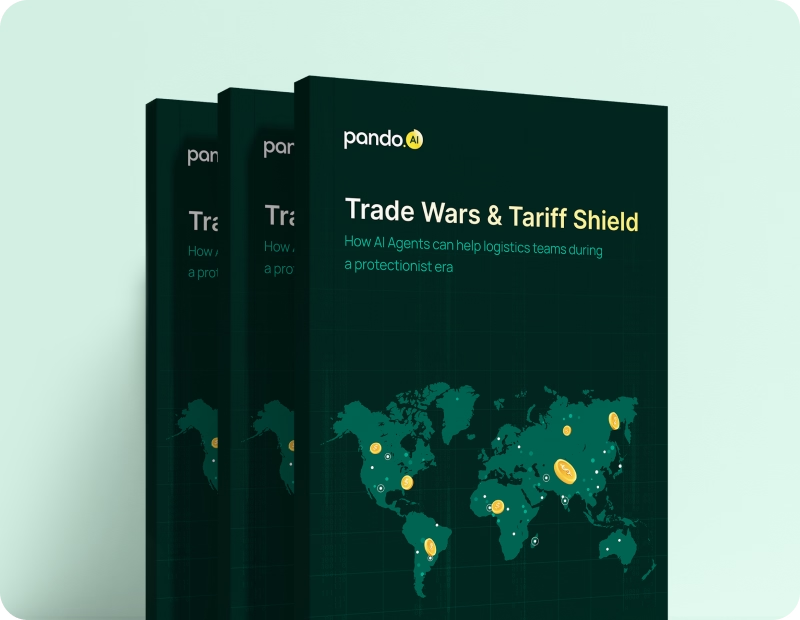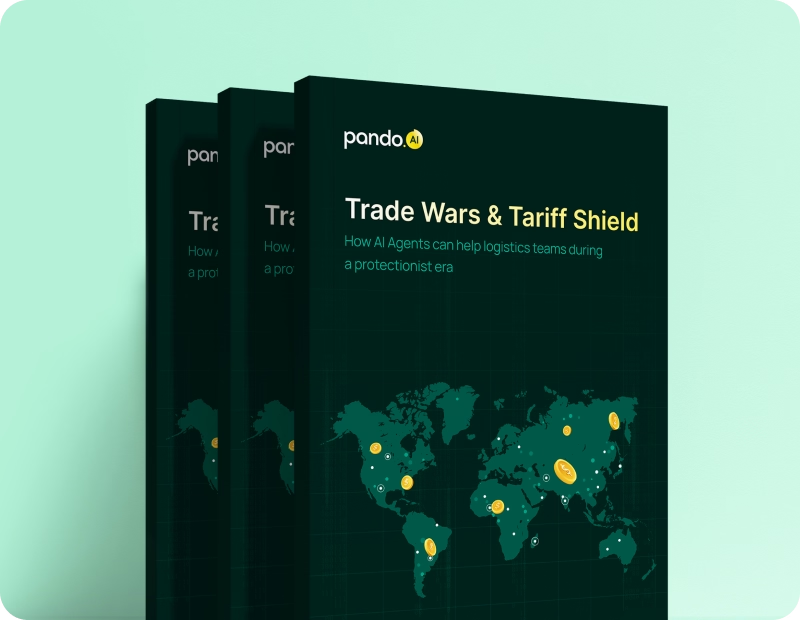-
Products Products
- Industry
- Initiatives
- Resources
- Company
- Book a demo

Before you go: Logistics leaders just dropped the truth on AI
The State of AI in Logistics 2025 is here — no hype, just real conversations and raw insights.
Beyond the Cold Chain: Protecting Pharmaceutical Integrity Amidst Tariff Turbulence
Preserve cold chain integrity despite tariff-driven transportation rerouting to ensure patient safety and regulatory compliance standards.
Published on May 5, 2025 • 4 mins read
Sridhar C S

Preserve cold chain integrity despite tariff-driven transportation rerouting to ensure patient safety and regulatory compliance standards.
For pharmaceutical logistics teams, a temperature excursion or documentation gap isn't just a delivery problem—it's a patient safety issue. Yet these high-stakes transportation operations now face unprecedented disruption as Trump's tariff policies force sudden rerouting of temperature-controlled freight through unfamiliar ports, carriers, and handling points.
The pharmaceutical cold chain—that meticulously managed transportation system that keeps medications at precise temperatures from manufacturing to patient—depends on established, validated shipping lanes with proven temperature control capability. Redirecting these sensitive shipments through alternative routes to avoid tariff exposure isn't as simple as changing the destination on a shipping label. Each new transportation corridor requires extensive temperature mapping, handling procedure validation, and regulatory documentation—processes that normally take months to complete properly.
A new prescription for pharmaceutical supply chains
The pharmaceutical industry faces a uniquely challenging freight environment under the new tariff regime. With Chinese-origin materials potentially subject to 245% duties and the Commerce Department investigating additional pharma-specific tariffs, established transportation lanes for temperature-sensitive products are being abandoned with little warning.
This sudden shift creates extraordinary challenges for pharmaceutical cold chain logistics. Air freight capacity for temperature-controlled shipments—already limited on specific trade lanes—may face severe constraints as pharmaceutical companies compete for available space on new routes while freight costs may spike by 30%. Alternative ocean transportation options often lack validated temperature-controlled container availability or appropriate handling facilities at transfer points.
The industry's exposure to these transportation disruptions is substantial. A Biotechnology Innovation Organization (BIO) survey revealed that "nearly 90% of U.S. biotech companies rely on some imported materials for at least half of their FDA-approved products." For these temperature-sensitive materials, the transportation challenge isn't just about cost—it's about maintaining product integrity through increasingly complex and unreliable freight networks.
The pharmaceutical industry has developed highly specialized global networks where raw materials, active pharmaceutical ingredients (APIs), and finished products move through tightly controlled transportation corridors. This shift is particularly evident in API sourcing, where dependencies on Chinese production are being reevaluated. BioSpectrum noted that "Indian pharma companies are adapting to Trump tariffs" as pharmaceutical manufacturers seek alternative sources for critical ingredients. However, this transition requires establishing new quality assurance protocols and transportation corridors for these highly regulated materials.
The impact extends beyond direct sourcing relationships. The integrated nature of global pharmaceutical manufacturing means that companies face pressure to relocate production to the U.S., potentially increasing production costs and creating medicine price inflation. Pharmaceutical Technology reported that a "US production shift is likely as Trump targets pharma," highlighting the far-reaching implications for industry logistics networks.
Pharmaceutical logistics under pressure

The specialized requirements of pharmaceutical transportation create unique challenges in adapting to tariff-driven trade disruptions. From temperature control to documentation compliance, pharmaceutical logistics teams face extraordinary pressure to maintain product integrity despite network upheaval.
-
Transit time variability: Extended and inconsistent transit times are pushing passive cooling solutions beyond their validated temperature maintenance windows, creating compliance risks for products with strict temperature parameters
-
Specialized container shortages: Active temperature control systems are in short supply as demand surges, forcing difficult decisions about which shipments receive premium packaging
-
Route validation gaps: New transportation lanes being utilized to avoid high-tariff origins often lack established temperature mapping and validation, creating regulatory compliance questions
-
GDP compliance challenges: Complete documentation of handling conditions throughout transit is increasingly difficult to maintain as shipments traverse unfamiliar networks
-
Batch traceability complications: Maintaining complete batch-level traceability becomes exponentially more complex when sourcing patterns suddenly shift
-
Customs documentation expansion: Clearance documentation has grown increasingly complex as authorities implement stricter verification of pharmaceutical classifications
-
Last-mile reliability concerns: Delivery reliability for patient-critical pharmaceuticals faces increased risk as transportation networks strain under reconfiguration
-
Accelerated lane qualification: Transportation lane qualification, a lengthy process for pharmaceutical products, must be compressed while maintaining standards
AI-powered pharmaceutical logistics for long-term resilience
For pharmaceutical companies navigating tariff-driven transportation disruption, artificial intelligence provides the critical capabilities needed to maintain product integrity. AI systems integrate real-time temperature monitoring with predictive transportation analytics to enable informed decisions when cold chain shipments face delays or rerouting.
These technologies continuously track both product conditions and carrier performance, allowing for immediate intervention when temperature excursions threaten. Most importantly, AI helps qualify alternative transportation lanes through virtual temperature mapping and automated compliance documentation, enabling rapid adaptation to changing tariff conditions while maintaining strict GDP standards. This capability is proving essential as pharmaceutical companies reconfigure distribution networks to minimize tariff exposure without compromising the cold chain integrity that patient safety depends on.
The pharmaceutical companies adapting most successfully to the current freight challenge are those investing in specialized logistics technologies that understand the unique requirements of temperature-controlled transportation. Get a complimentary copy of our whitepaper, Trade Wars & Tariff Shield: How AI Agents can help during a protectionist era, to learn how leading pharmaceutical shippers can maintain strict GDP compliance and temperature control despite tariff-driven freight disruptions.
Subscribe to Pando blog and Crossroads newsletter now!
Stay up to date with the latest logistics, transportation, and supply chain tips and news.
Subscribe Here!













